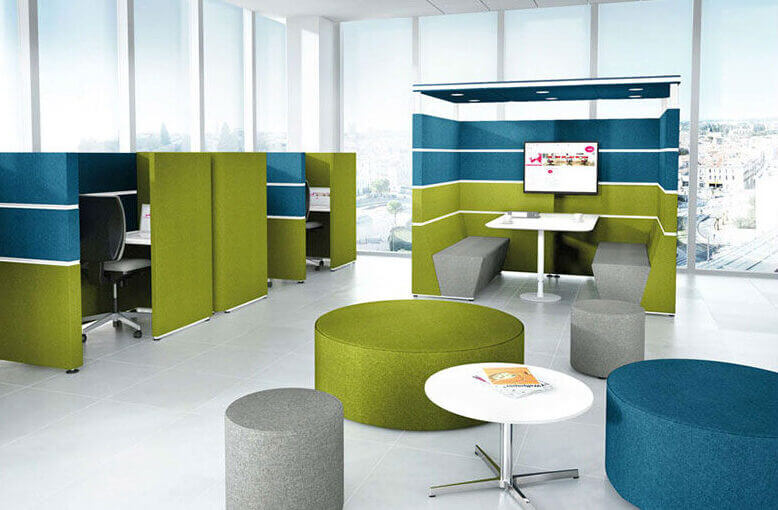Creating The Perfect Home Office
Are you working from home and settling into a new home office? This post contains a few tips and tricks for creating a comfortable (& productive) home office set up!
During the pandemic, many people were forced to set up makeshift home offices. While these set ups might have served their purpose during lockdowns, they shouldn’t be relied on as a long term solution. In addition to having the right equipment, the physical setup — the ergonomics of the workspace — is critical, especially around avoiding repetitive strain injuries that a bad setup can cause.
Whether you are spending a full 40 hours per week in your home office or just a few hours, they both require the same amount of thought.
Dedicated Space
A long-term home office should ideally be an area of your home that is properly outfitted for your work tasks, but can also be separated from your living spaces. Many pandemic WFH offices were found on dinner tables in the kitchen or the corner of a sitting room. While these may have served their purpose at the time, if you are working from home for the foreseeable future, it might be time to change it up.
Ideally, you would use a small room that can hold a desk and computer equipment and whose door can be shut for the essential need to separate work life from home life. If you don’t have the space to dedicate a full room to your office, you might have a spare bedroom that could be used.
Internet
If you are a working from home veteran, this is probably something that you ironed out a long time ago. However, if you are new to setting up a home office or are setting up a home office in a new area, the Internet should be a major consideration.
The best connections are wired Ethernet ones, so if possible, connect your computer to your router via an Ethernet cable; that’s especially important if you do video or other bandwidth-intensive work. Wi-Fi is fine for basic office work, so if you can’t wire your computer to your router, use Wi-Fi.
Focus On What You Need
Unfortunately there is no one size fits all office setups. Before you start designing your workspace you should start by setting clear expectations. Knowing what exactly you need from a workspace before designing anything will make the process much easier. Keep in mind that your needs will depend on the type of work you do.
Choose Comfortable Ergonomic Furniture
Choosing comfortable and ergonomic furniture for your home office isn’t a luxury choice. You’ll be spending a lot of time in that office, so well-designed and ergonomic furniture is essential for your health and overall well-being.
In addition to protecting your health, ergonomic furniture will help you feel more comfortable and, as a result, focus better. Keep in mind that “ergonomic” doesn’t mean too-comfortable furniture that’ll make you fall asleep!
Monitor
Your monitor should line up so that if you look straight ahead when sitting straight, your eyes are at a height of 25% to 30% below the top of the screen. That way, you keep your shoulders level and don’t hunch your back — two easy ways to cause injury.
To get the proper height, you’ll likely need a riser for the monitor. A monitor whose height is adjustable is a plus, though you may still need a riser.
Chair
There are a lot of bad chairs out there that can injure you over prolonged computer use. Dining chairs and deck chairs, for example, rarely are at the right height, and they don’t always encourage the needed upright posture.
We would suggest investing into a quality chair which is specifically decided for long-term usage. Look for chairs with adjustable height, have wheels for rolling and have some sort of lumbar support for the lower back.
Desk
Your space needs a desk or table that is at work height. The industry standard is 29 inches from the floor to the top of the work surface. Tall people do better with a higher height, and short people do better with a lower height. Many desks and tables have adjustable height, usually through their feet.
You know your work surface is at the correct height if, when you sit up straight, your forearms are parallel to the ground and your wrist is not bent up or down when you type or mouse. It’s important to get this step right, as using a desk at the wrong height for a long period of time is a sure-fire way of attracting unwanted injuries.
Eliminate Distractions
One of the major downsides of working from home is all the distractions. While there are distractions at the workplace, they are nothing compared to what you have at home. So, don’t make things too distracting at that home office. There are items that help you take a quick, five-minute break when you need to, and other things, like the TV, that can end up wasting hours of your time.
Personal Touches
Consider adding your own touch to your office space. Not only will it make it feel like your workspace, it will help boost your productivity. Surround yourself with items that inspire and motivate you. This will help you get in the right mood for work and overcome the challenges that the day throws at you.
Natural Lighting
Lighting is an often overlooked piece of the puzzle when designing an office space. Ideally you will have a form of natural lighting coming into your space. Natural lighting is great for your overall well-being. It helps you maintain your levels of vitamin D— a critical nutrient that improves your sleep and helps you stay in a good mood. In addition to its health benefits, having a home office with natural lighting will help you reduce your energy consumption because you’ll need to use artificial lighting less often.
Working from home has become the new normal for a lot of people. While there may be many challenges of working at home, a well-designed office will make it easier. By following our tips, you will create a space that you can focus and be productive, without the lengthy commute in the mornings.



